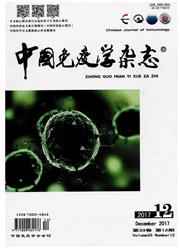

 中文摘要:
中文摘要:
目的:研究胚胎干细胞H9与肝癌细胞株Hep G-2共培养上清对肝癌细胞Hep G-2增殖、迁移及凋亡的影响,并探讨其可能机制。方法:体外共培养H9与Hep G-2,于不同时间即12、24、36、48 h取得上清,并把不同浓度上清即20%、40%、60%、80%作用于Hep G-2细胞,于倒置荧光显微镜下观察细胞的生长情况和形态变化;用MTS法检测不同浓度上清分别作用Hep G-2细胞24、48 h后细胞的增殖情况;应用流式细胞术检测细胞的凋亡情况;用Hochest33258染色检测细胞的凋亡情况;Transwell小室法检测上清对细胞侵袭迁移的影响。结果:不同浓度的共培养上清液均对Hep G-2细胞的增殖有一定的抑制作用,并且40%浓度及以上的浓度能明显促进肝癌细胞的凋亡,主要是早期和晚期凋亡,小室法也看出,上清对肝癌细胞的侵袭和迁移也具有明显的抑制作用,同时,上清对正常的肝细胞L02无明显的作用。结论:胚胎干细胞与肝癌细胞Hep G-2共培养上清能够在体外明显抑制肝癌细胞Hep G-2的增殖、迁移和侵袭,并且促进其凋亡,并且具有浓度依赖性,共培养时间越长,抑制效果越好。说明此上清具有一定的抗肿瘤效应。
 英文摘要:
英文摘要:
Objective:To explore the influence of co-culture supernatant from embryonic stem cell H9 and hepatoma cell line HepG-2 on the proliferation,migration and apoptosis of hepatoma cell HepG-2. Methods: We conducted in virto co-culture of H9 and HepG-2, then obtained supernatants in 12 h ,24 h, 36 h and 48 h and let supernatants of different concentration, namely 20% ,40%, 60% and 80% to act on HepG-2 cells. We observed growth condition and morphological changes of the cells under an inverted fluorescence microscope. MTS method was employed to evaluate proliferation conditon of HepG-2 cells in 24 h and 48 h since supernatants of varied concentrations had been added. We applied flow cytometry to show the apoptosis of ceils. We also detected apoptosis of cells using Hochest33258 chromosome. We probed influence of supernatants on migration of cells. Results: Co-culture su- pernatants of varied concentration all had inhibitive effect on proliferation of HepG-2 cells. Supernatants of concentrations higher than 40% promoted apoptosis, particularly early and late apoptosis of HepG-2 cells rather notably. Chamber method also revealed the supernatant's inhibition to invasion and migration of HepG-2 cells, and it had no conspicuous effects on normal hepatocyte L02. Conclusion: Co-culture supernatant of embryonic stem ceils and hepatoma cell HepG-2 significantly inhibits the proliferation, migration and invasion of hepatoma cell HepG-2 in virto while promoting its apoptosis. Its effectiveness is concentration-dependent and increases over time. These results prove the anti-tumor effectiveness of this supernatant.
 同期刊论文项目
同期刊论文项目
 同项目期刊论文
同项目期刊论文
 Parallel induction of cell proliferation and inhibition of cell differentiation in hepatic progenito
Parallel induction of cell proliferation and inhibition of cell differentiation in hepatic progenito 期刊信息
期刊信息
